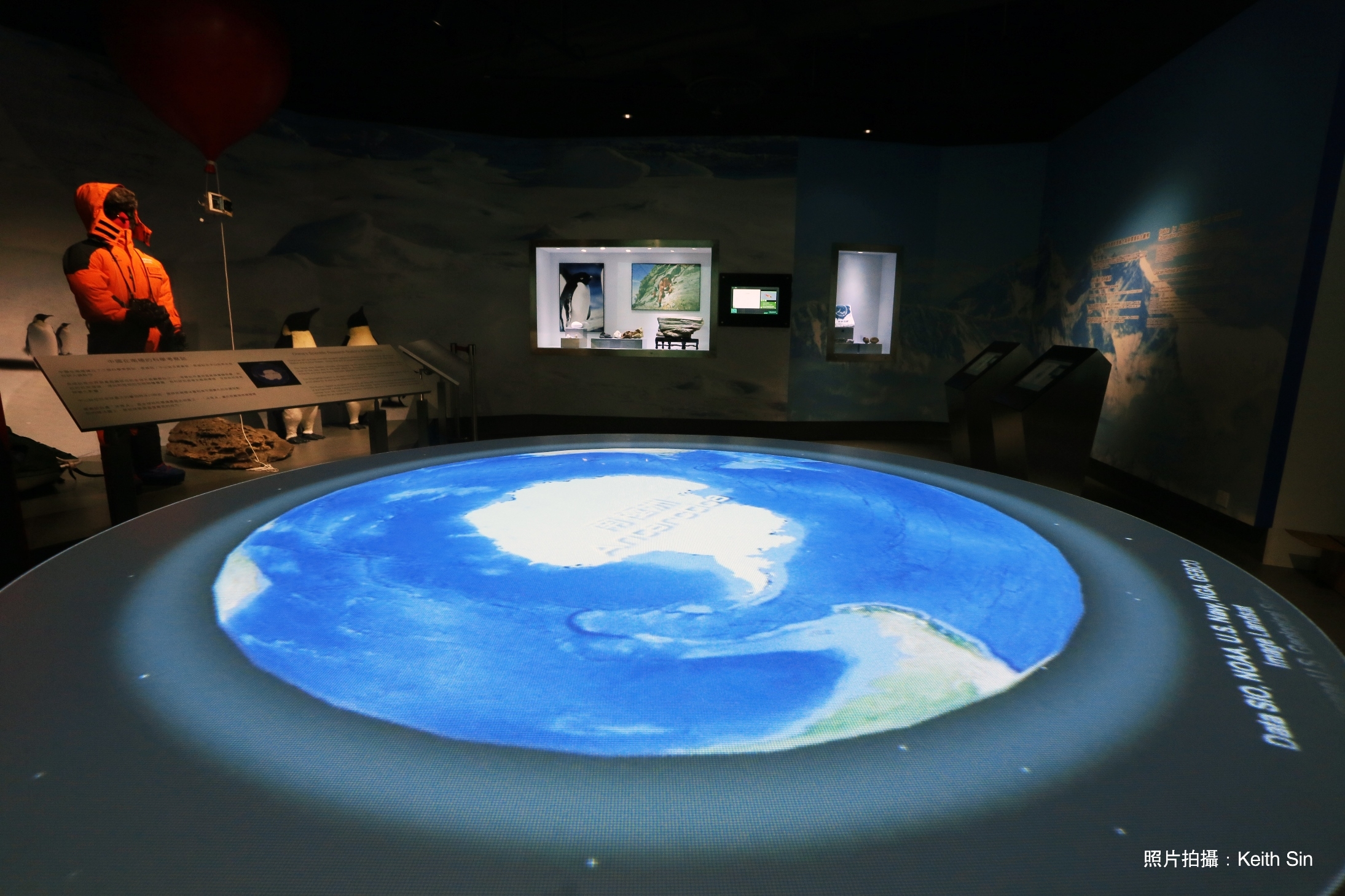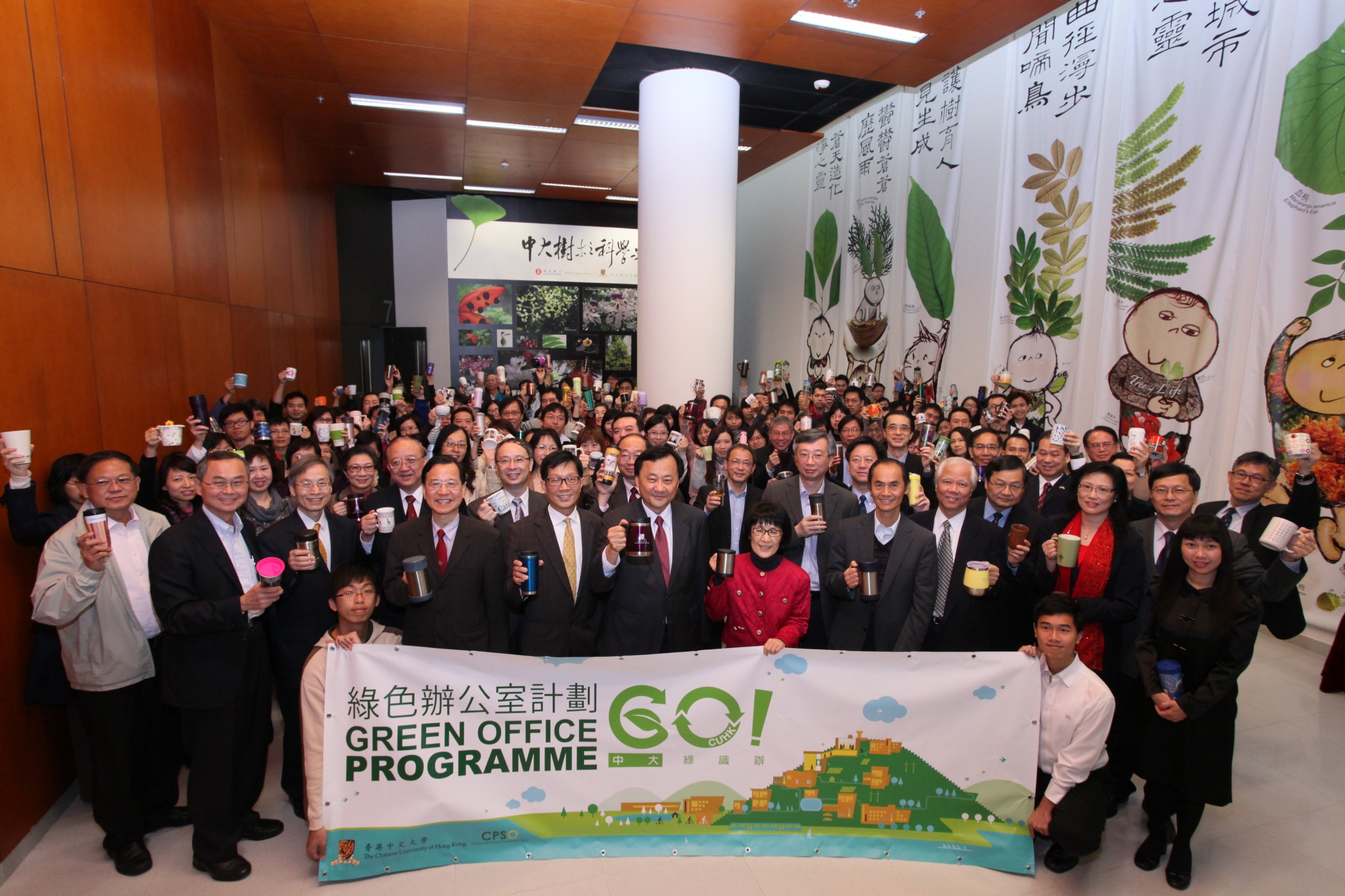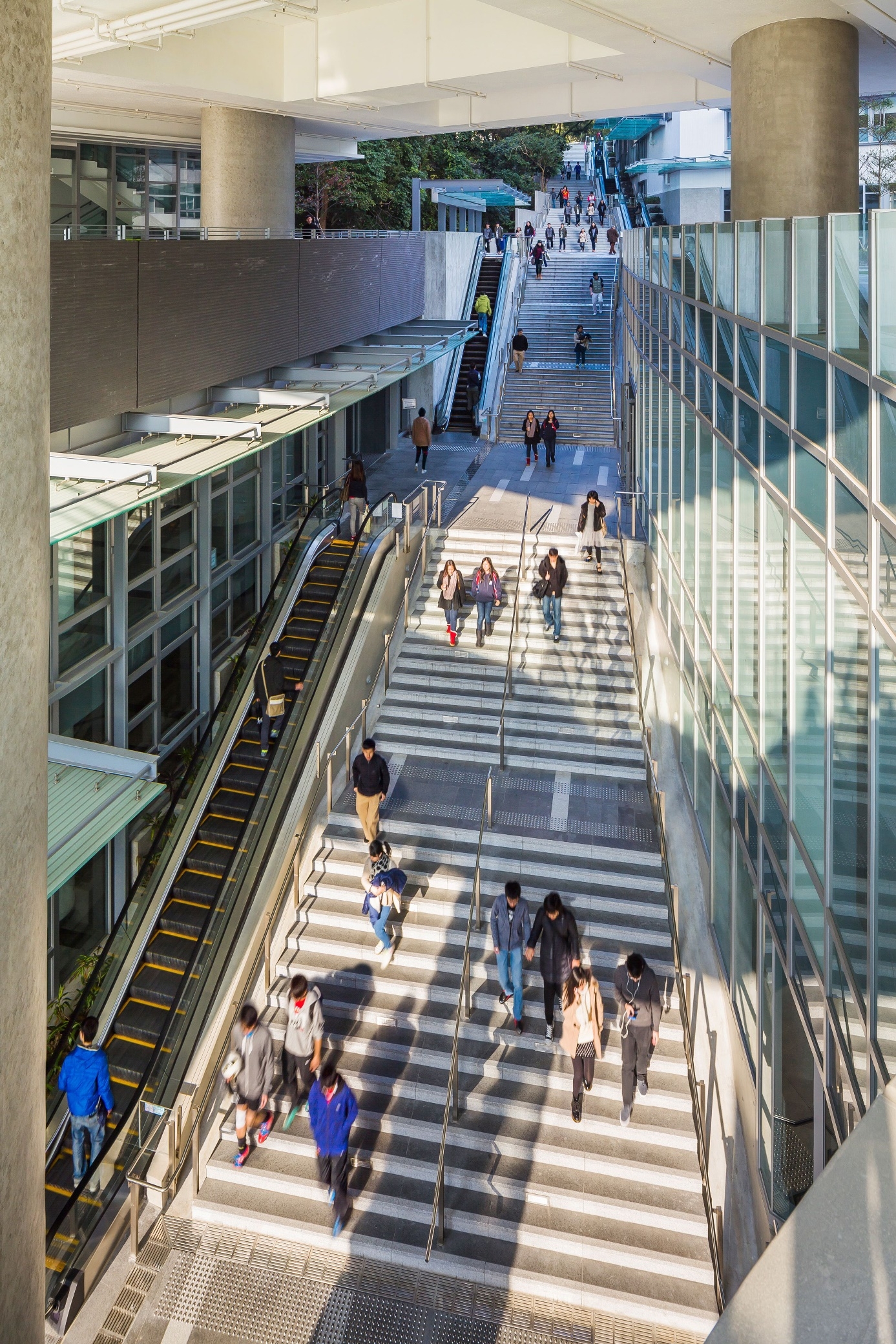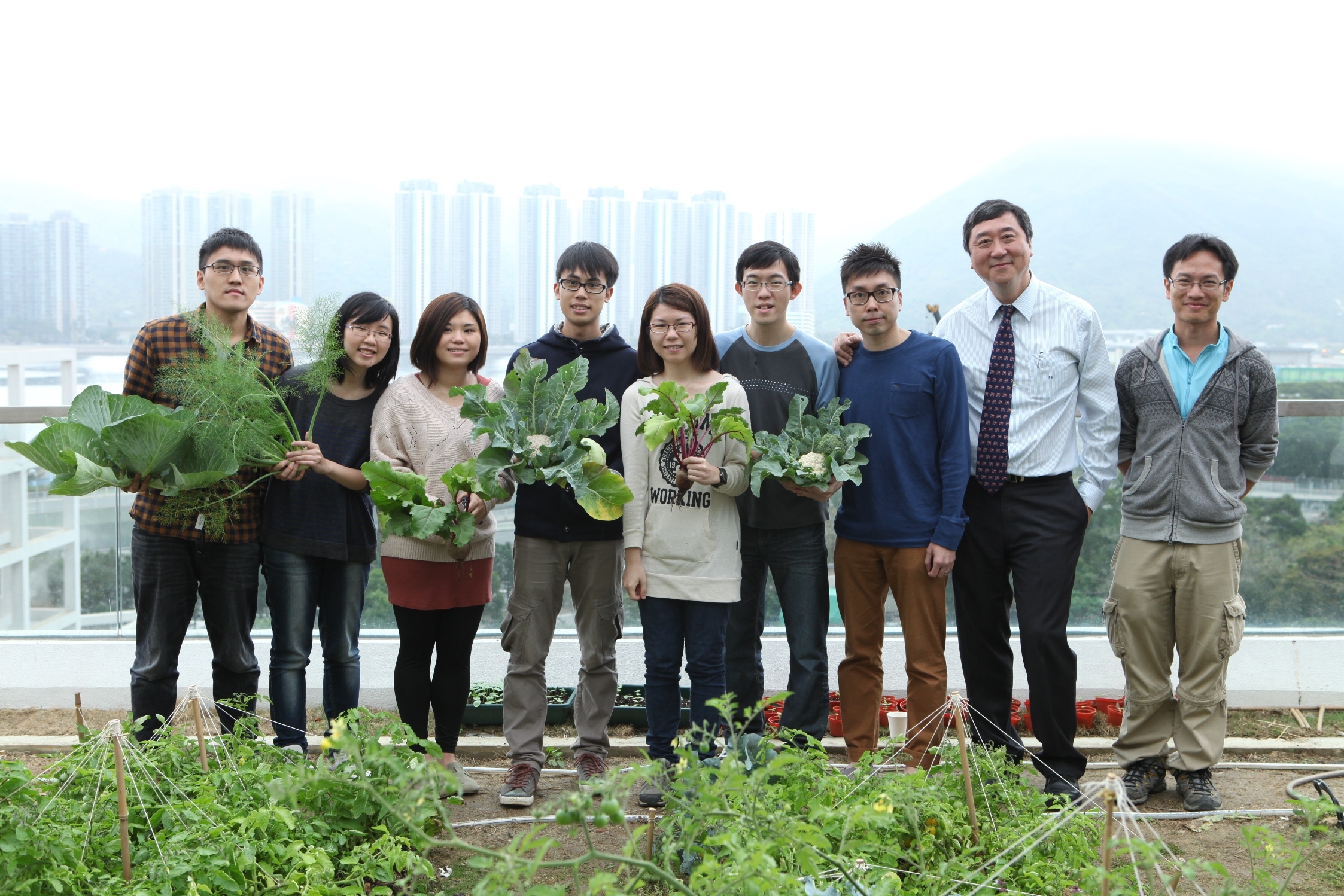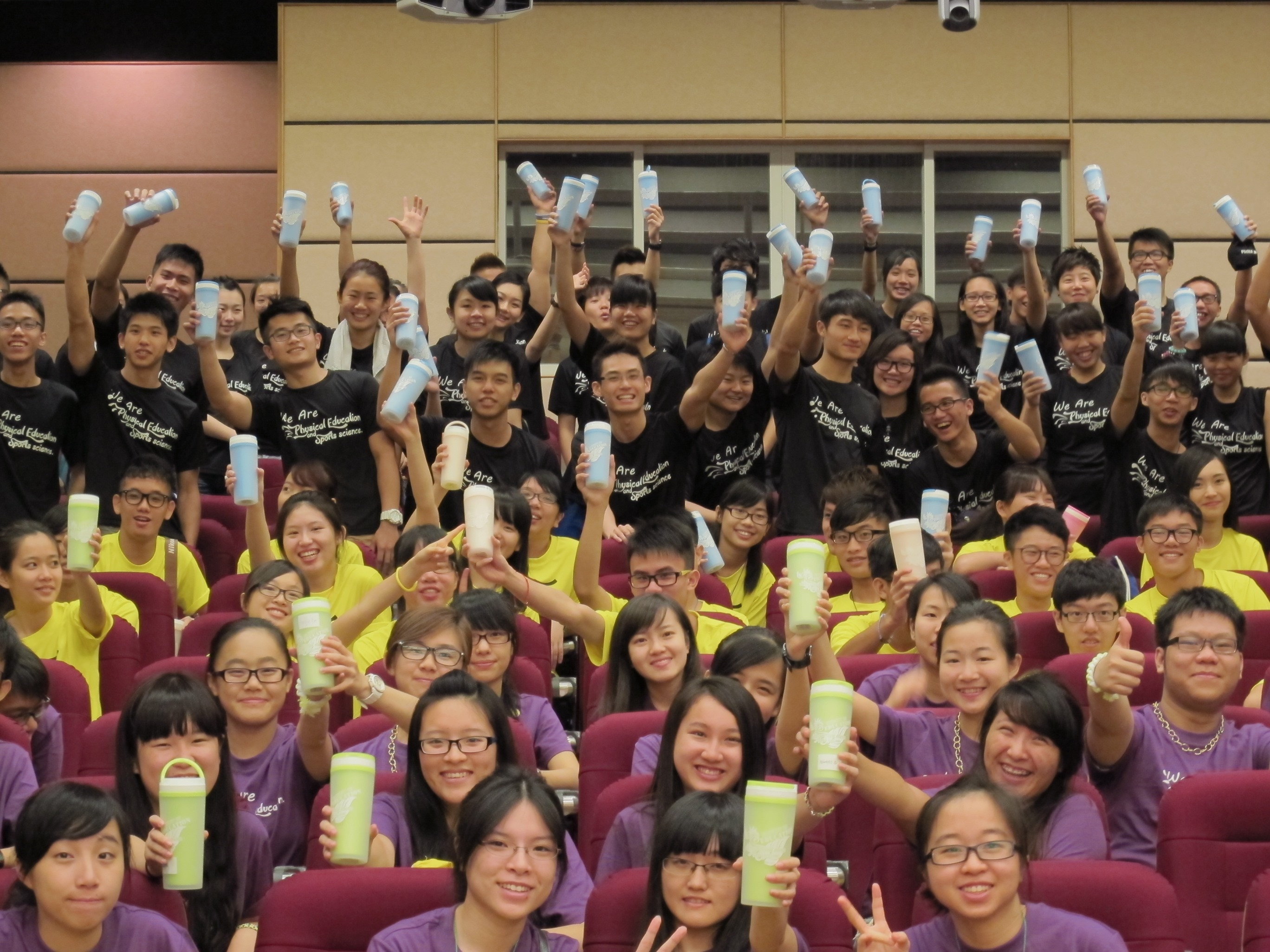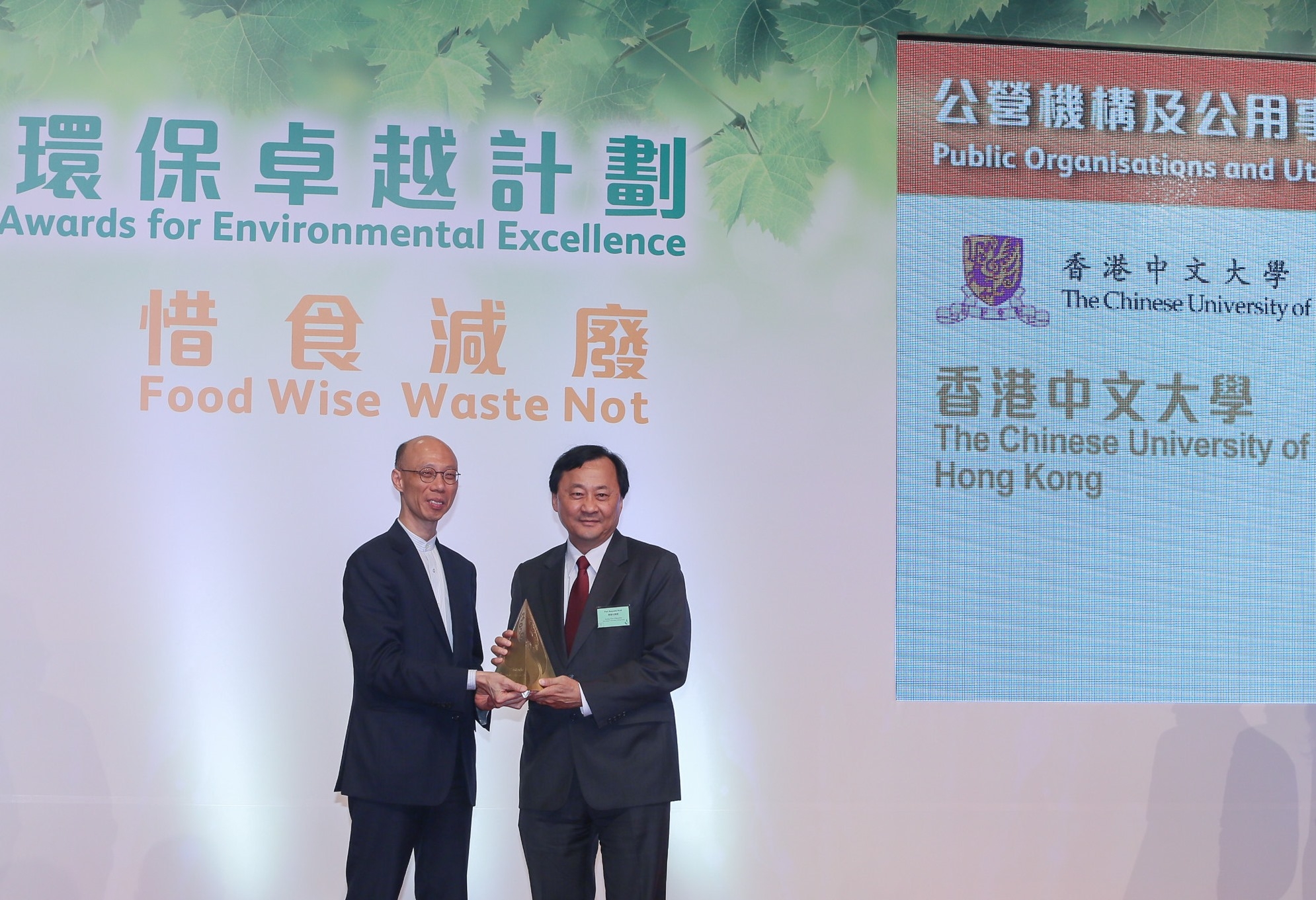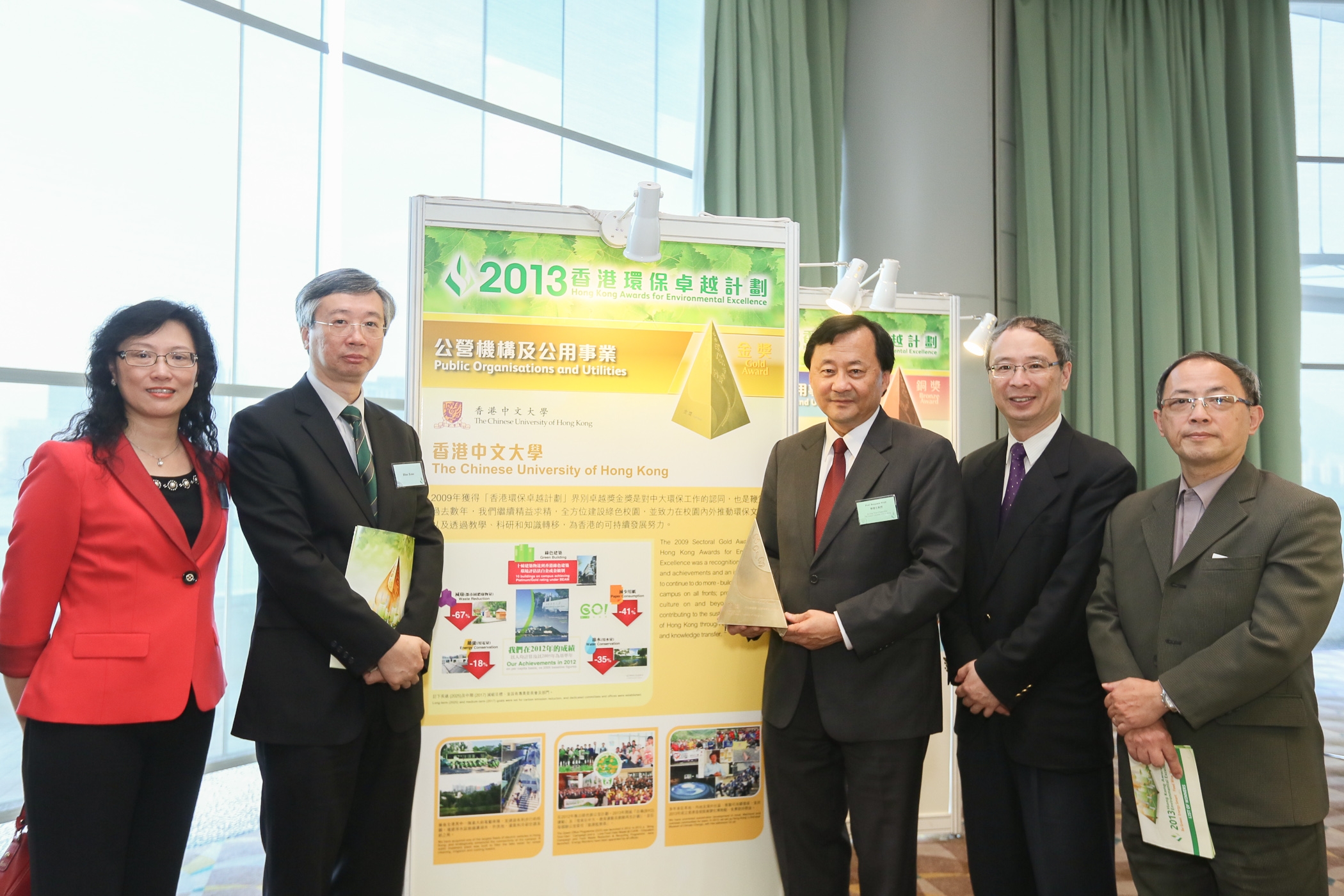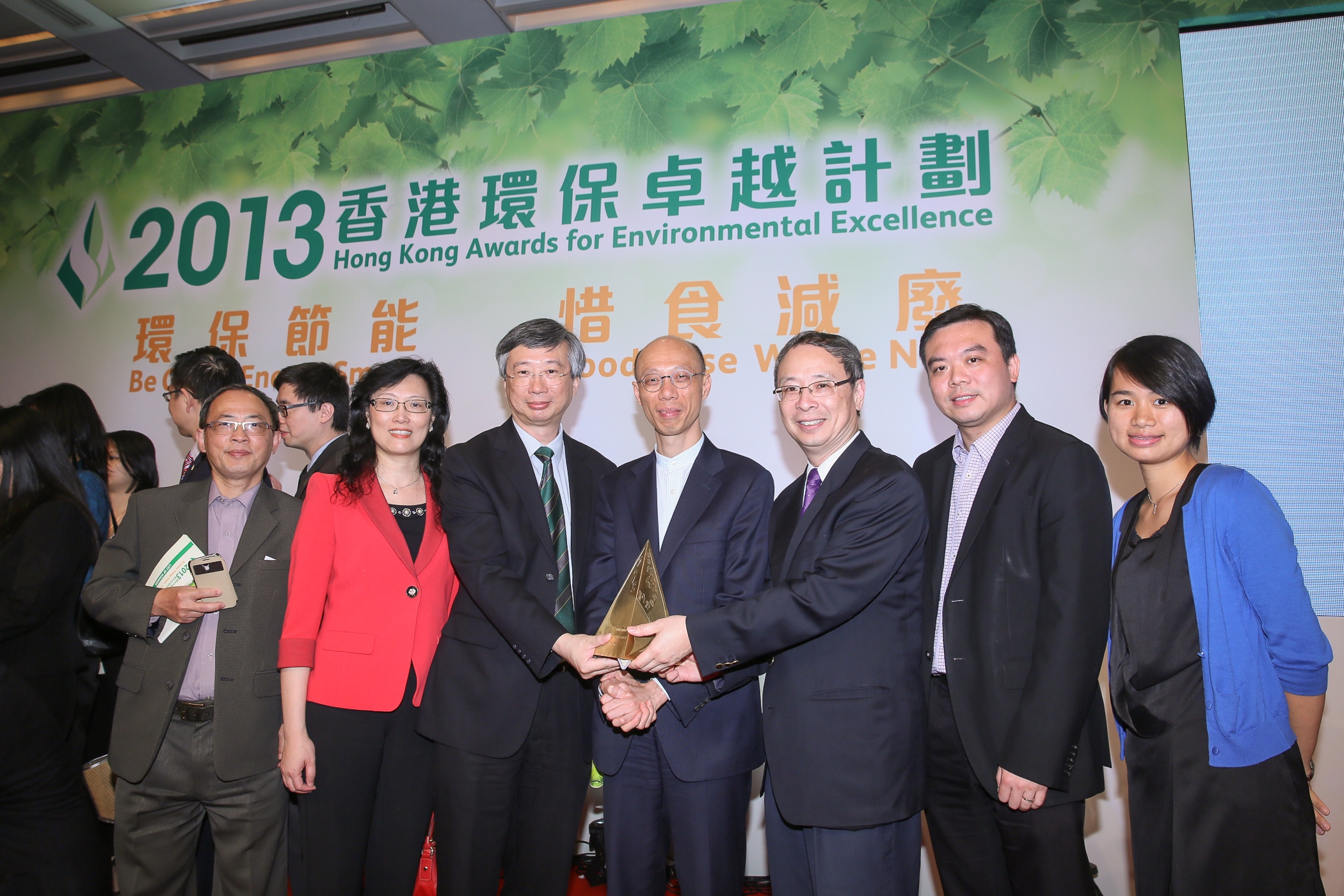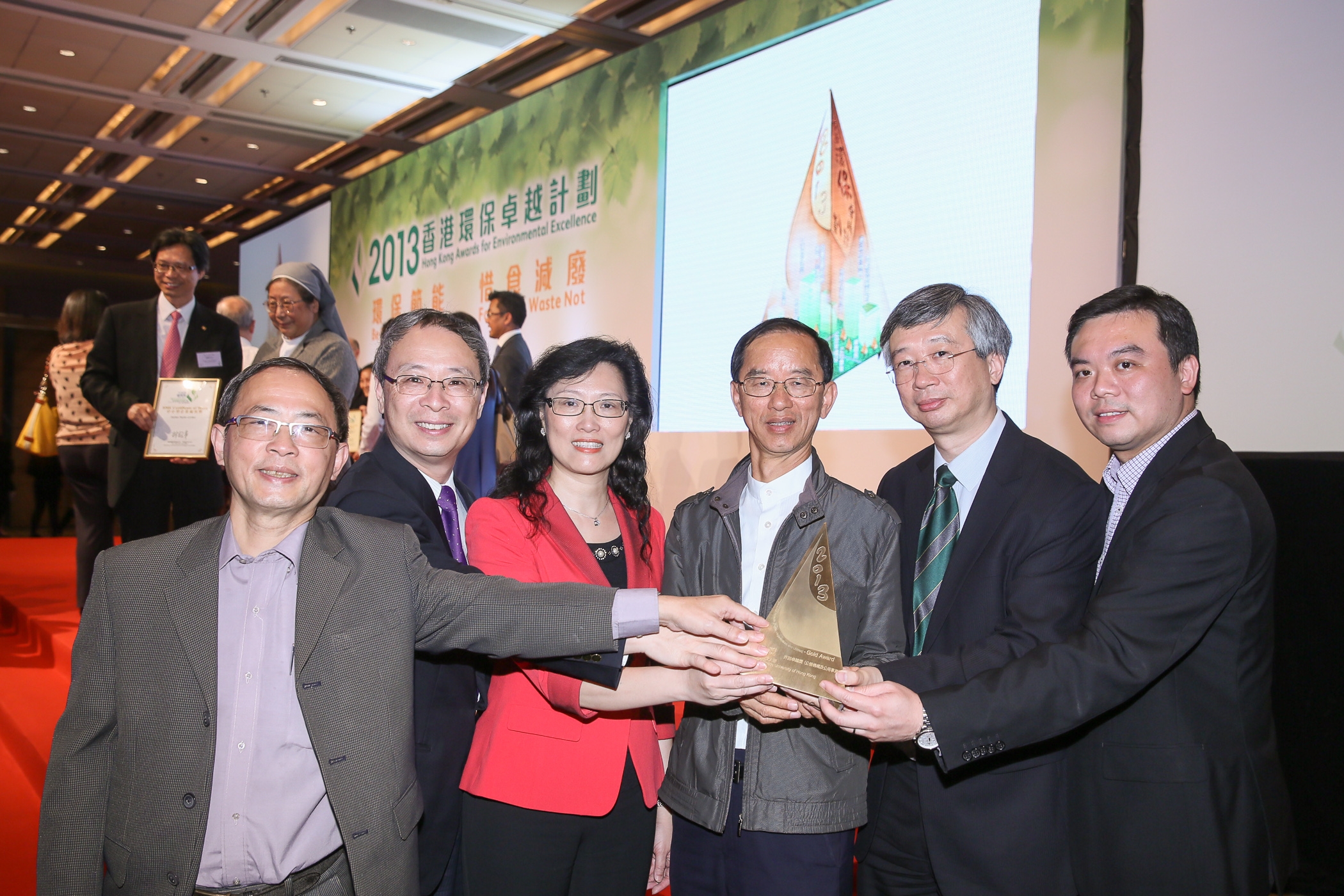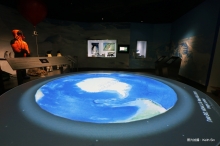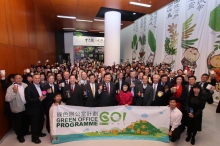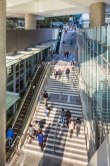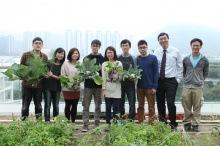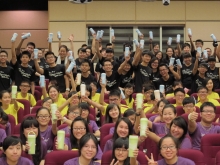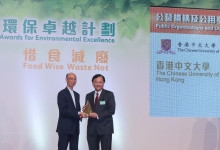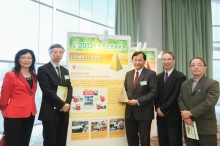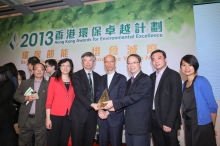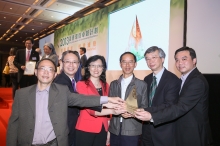CUHK
News Centre
CUHK Green Campus Clinches HKAEE Gold Award for Second Time
The Chinese University of Hong Kong (CUHK) was awarded today (2 May) the Gold Award for the Public Organizations and Utilities Sector of the 2013 Hong Kong Awards for Environmental Excellence (HKAEE). In 2009, CUHK was the first public organization to win this Gold Award. With its second success now, CUHK is the only public organization to boast two Gold Awards of HKAEE in the sector – a testimony to the University’s commitment, persistence and remarkable accomplishments in environmental protection.
A record number of 896 institutions vied for the HKAEE awards in 2013. Contestants for these awards have to go through a three-stage assessment: provision of detailed information on their green policies and practices as well as environmental achievements; field assessment by a team of assessors; final assessment by Adjudicating Panels comprising representatives from trade associations, government departments and professional bodies. The key factors of the assessment criteria are Green Leadership, Programme and Performance, and Partner Synergy.
CUHK staff and students have made remarkable achievements in energy conservation, water conservation, waste reduction, ecology preservation and environmental improvement, and collaborated closely with suppliers and canteens in green purchasing, promotion of low-carbon diet and reduction of food waste. Apart from its all-out efforts on campus, CUHK reaches out to the community to raise awareness of sustainability.
Professor Joseph J. Y. Sung, Vice-Chancellor and President of CUHK, says, ‘As a university, we have an educational and social responsibility: we spare no effort to keep our campus as a role model of environmental conservation and sustainable growth, and our staff, students and alumni as green pioneers in Hong Kong.’
Recognitions for Green Buildings
In 2010, CUHK pledged in its Campus Master Plan to cut Greenhouse Gas (GHG) emissions (per capita) on campus by 20% by 2025. Professor Fung Tung, Associate Vice-President, adds, ‘The Chinese University has in recent years introduced many policies for protecting the environment. All our new buildings target at attaining the highest (‘Platinum’) rating of the Building Environmental Assessment Method (BEAM) or BEAM Plus, to minimize their impact on the environment.’ With due deployment of resources, to date CUHK has 16 new buildings with ‘Platinum’ or ‘Gold’ rating from BEAM or BEAM Plus.
Engaging the Campus Community and Nurturing a Culture of Sustainability
CUHK has been actively promoting green culture and low-carbon living, within campus and without, and has launched numerous programmes and schemes to induce in the entire university community a change of behaviour and attitude, to further nurture a culture of sustainability.
Ms. Vivian Ho, Director of Campus Planning and Sustainability, highlights in particular the Green Office Programme (“GO!”), launched in 2012 – an ongoing programme which has made a profound impact, attracting over 100 offices and student bodies to join, engaging more than 4,000 staff and students. Through this Programme, offices are encouraged to take simple and yet effective green actions in four focus areas, namely energy conservation, waste reduction, green purchasing and raising awareness and engagement. To further engage individual staff and students to go green, the ‘CU Green Buddies’ scheme was launched last year, promoting low carbon lifestyle and green practices in everyday life. Besides, CUHK requires each office to appoint at least one staff member to serve as Energy Warden to facilitate the implementation of energy conservation in the office/department. Sustainable Campus, a revamped electronic publication, has since September 2013 kept 130,000 staff, students and alumni abreast of news on local as well as overseas sustainability issues.
Reaching out to the Community
In 2012, with a generous donation from The Hong Kong Jockey Club Charities Trust, a 5-year community engagement programme, ‘Gaia’, was launched, to promote green education and carbon audit among schools and non-governmental organizations, and to organize conferences, public forums and educational fairs. The Jockey Club Museum of Climate Change, the first ever in Hong Kong, was founded in 2013 and is open to the public free.
The HKAEE was launched in 2008 by the Environmental Campaign Committee (ECC) in conjunction with nine organizations, with the sponsorship of the Environment and Conservation Fund. It gives recognition to achievements of different sectors in environmental management. In 2013 the scheme had 12 Sector Awards for big businesses and 4 Sector Awards for small and medium enterprises, with Gold Award, Silver Award, Bronze Award and Certificate of Merit for each.
Remarkable Green Performance
With 2005 as the base year, CUHK has made the following progress as of 2012:
- reduced energy use (per capita) by 18%, saving carbon emissions that would have taken 510,000 trees to absorb;
- reduced waste to landfill (per capita) by 67%;
- reduced water consumption (per capita) by 35%;
- reduced paper use (per capita) by 42% as compared to 2006 baseline;
- highest renewable energy generating capacity among local tertiary institutions
The University has set long-term sustainability targets to reduce per capita energy use and greenhouse gas (GHG) emissions by 25% and 20% respectively by 2025, from base figures of 2005.
For more information on sustainability at CUHK, please visit the CUHK Sustainability website: http://www.cuhk.edu.hk/sustainability/en/
Hong Kong’s first Museum of Climate Change, at CUHK, is open to the public and organisations for free
Green Office Programme “GO!”, the first such large-scale project in academic circles, was launched at CUHK in 2012 under the leadership of the entire top management and over 100 offices and student bodies have joined, engaging more than 4,000 staff and students.
CUHK campus abounds in walking routes, with link-bridges and express lifts linking up different parts of the campus. Photo shows the escalators at Yasumoto International Academic Park, which won the MIPIM Asia Award for Best Urban Regeneration Project 2013.
CUHK Architecture students celebrating with Prof. Joseph Sung, the Vice-Chancellor and President, the harvest of the first crop on their rooftop garden on 25 March 2013 as part of their course work on permaculture.
As part of the Bring Your Own (BYO) Campaign to promote waste reduction at source, the University provides sponsorship to encourage the O’Camps to come up with their own bottle designs with the BYO slogan to reduce the use of disposable plastic bottled water, reaching out to over 3000 students in 2013.
Prof. Benjamin Wah, Acting Vice-Chancellor, receives the Gold Award at the 2013 Hong Kong Awards for Environmental Excellence from Mr. Wong Kam Sing, Secretary for the Environment, HKSAR Government.
(From left) Ms. Vivian Ho, Director of Campus Planning and Sustainability; Prof. Fung Tung, Associate Vice-President; Prof. Benjamin Wah, Acting Vice-Chancellor; Mr. Benny Tam, Director of Estates Management; Prof. Chu Lee-man, Chairman of the Committee on Campus Environment
(From left) Mr. Benny Tam, Director of Estates Management; Ms. Vivian Ho, Director of Campus Planning and Sustainability; Prof. Fung Tung, Associate Vice-President; Mr. Wong Kam Sing, Secretary for the Environment, HKSAR Government; Prof. Chu Lee-man, Chairman of the Committee on Campus Environment; Mr. Jor Fan, Environmental Sustainability Manager of Estates Management Office; Ms. Doris Chan, Project Coordinator of Estates Management Office
(From left) Mr. Benny Tam, Director of Estates Management; Prof. Chu Lee-man, Chairman of the Committee on Campus Environment; Ms. Vivian Ho, Director of Campus Planning and Sustainability; Mr. Lam Chiu-ying, Chairman of Environmental Campaign Committee; Prof. Fung Tung, Associate Vice-President; Mr. Jor Fan, Environmental Sustainability Manager of Estates Management Office


